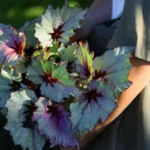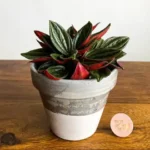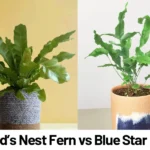Understanding Calathea lancifolia: The Rattlesnake Plant
For indoor plant lovers searching for a visually unique and pet-safe tropical addition to their collection, Calathea lancifolia, commonly known as Rattlesnake Plant, is a stunning choice. With its long, lance-shaped leaves that boast wavy edges, dark green markings, and deep purple undersides, this plant brings an exotic flair to any indoor space. More than its appearance, Calathea lancifolia is appreciated for its rhythmic leaf movements — a form of nyctinasty, in which leaves move in response to light, opening in the day and closing at night. This charming habit often intrigues plant parents and offers a deeper appreciation for the delicate complexity of foliage plants.
Natural Habitat and Growing Conditions
Native to the tropical rainforests of Brazil, Calathea lancifolia thrives in humid, low-light environments under the forest canopy. Understanding the plant’s natural habitat provides clues on how to care for it indoors. Recreating similar conditions at home will ensure your plant not only survives but flourishes.
- Light: Prefers bright, indirect light. Direct sunlight can bleach and scorch its delicate leaves.
- Temperature: Ideal temperature range is between 65–80°F (18–27°C). Avoid exposure to drafts and sudden temperature drops.
- Humidity: High humidity is key. Aim for at least 50% humidity, though 60–70% is preferable.
This plant is well-suited for terrariums and bathrooms where humidity levels are naturally elevated. If that’s not possible, a humidifier or pebble tray placed nearby can help to maintain proper ambient moisture.
Watering and Soil Requirements
Calatheas are known for their sensitivity to water quality and soil conditions, and Rattlesnake Plant is no different. Careful attention goes a long way in avoiding common issues such as leaf browning or root rot.
Watering Tips
- Use distilled, filtered, or rainwater when possible. Tap water containing chlorine, fluoride, or hard minerals can cause leaf tips to brown.
- Keep the soil consistently moist but not soggy. Allow the top inch of soil to dry out slightly between watering sessions.
- During colder months, slightly reduce watering frequency as the plant’s growth rate slows down.
Soil Recipe
A well-draining, moisture-retentive potting mix is essential. Try mixing the following:
- 2 parts peat moss or coco coir
- 1 part perlite
- 1 part orchid bark or composted leaf mold
This blend ensures adequate aeration while retaining enough moisture to support the plant’s needs.
Fertilizing and Feeding
Although not a heavy feeder, Calathea lancifolia benefits from regular feeding during the growing season to sustain its vibrant foliage and promote healthy growth.
- Use a balanced, water-soluble houseplant fertilizer diluted to half strength.
- Fertilize every 4–6 weeks from spring through early fall.
- Do not fertilize in winter when the plant is semi-dormant.
Over-fertilization can damage the roots and cause leaf edge browning, so it’s always safer to under-feed rather than over-feed.
Pruning and Propagation
Pruning
While Calathea lancifolia doesn’t require heavy pruning, occasional maintenance helps keep the plant tidy and healthy.
- Trim dead or yellowing leaves at the base with clean, sharp scissors.
- Remove any damaged or curling leaves to redirect energy to new growth.
Propagation
Unlike some other houseplants, Calathea lancifolia cannot be propagated from cuttings. The most effective method is through division while repotting.
Steps to propagate:
- Carefully remove the plant from its pot during spring or early summer.
- Gently separate root clumps with at least one healthy stem and root system per section.
- Replant divisions into their own containers with fresh soil mix.
- Water well and maintain high humidity until established.
This method ensures genetic consistency and promotes vigorous new growth.
Common Issues and Troubleshooting
Plant parents may encounter a few issues specific to Calatheas, but knowing what to look for will help resolve problems early.
Brown Leaf Tips
Often caused by low humidity or poor water quality. Mist the plant regularly and switch to distilled or rainwater if using tap water.
Curling Leaves
This may indicate underwatering, too much direct sunlight, or low humidity. Adjust one factor at a time to identify the root cause.
Yellowing Leaves
- Overwatering can cause root rot leading to yellow leaves.
- Ensure good drainage and allow the upper soil to dry slightly before watering again.
Pests
Though relatively pest-resistant, the Rattlesnake Plant can occasionally attract spider mites or mealybugs.
- Wipe leaves with a damp cloth regularly to deter pests.
- Spray with neem oil or insecticidal soap if infestation occurs.
Decorating with Calathea lancifolia
Thanks to their dazzling foliage and vertical leaf pattern, Rattlesnake Plants make excellent statement pieces in interior decor:
- Living rooms: Place on plant stands to elevate and showcase leaves.
- Bathrooms: Their humidity demands are naturally met in most bathrooms, making it an ideal low-maintenance zone.
- Bedrooms: As a non-toxic houseplant, they’re safe for pets and children.
Pairing Calathea lancifolia with other jungle foliage like ferns or prayer plants can create an engaging indoor tropical display.
Conclusion: Rewarding and Resilient
Although sometimes labeled as finicky, Calathea lancifolia is a rewarding plant when its humidity, lighting, and watering needs are met. Its dramatic foliage and rhythmic daytime movement provide not only aesthetic appeal but also a fascinating botanical behavior. With attentive care, your Rattlesnake Plant can become a long-term, eye-catching companion in your indoor garden.
If you’re just getting started with indoor foliage plants or looking to expand your collection of tropical greenery, the Rattlesnake Plant deserves a spot on your plant shelf — and in your heart.
References
- Boyle, C. (2020). Houseplants: The Complete Guide to Choosing, Growing, and Caring for Indoor Plants. Cool Springs Press.
- Roethling, D. (2022). Growing Calathea lancifolia Indoors. North Carolina Extension Gardener Plant Toolbox. Retrieved from https://plants.ces.ncsu.edu
- Hessayon, D. G. (2012). The House Plant Expert (new ed.). Expert Books.








